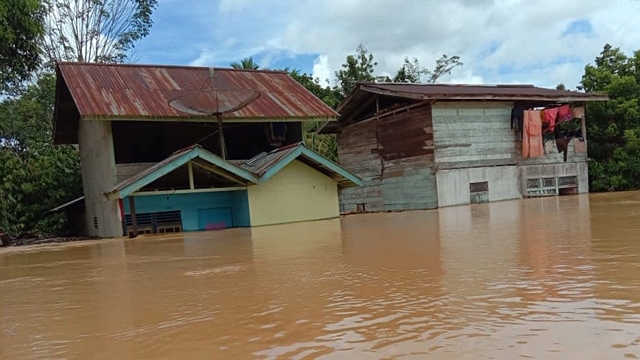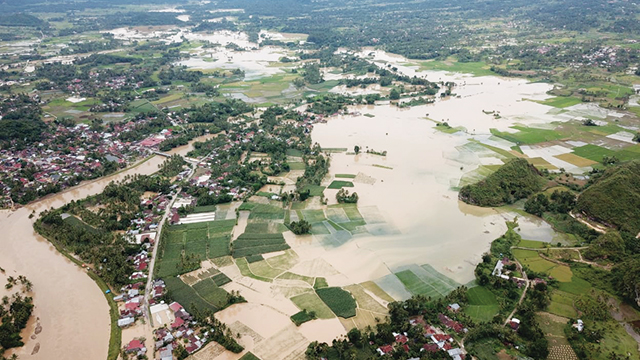Jakarta (Greeners) – Indonesian weather modification technology or Teknologi Modifikasi Cuaca (TMC) used to control forest fires in some regions might alter with the flood. High rainfall intensity has caused flooding in Indonesia, namely Central, West, and South Kalimantan.
Head of Directorate of Forest Fires Prevention, Forestry and Environment Ministry (KLHK), Radiyan Bagiyono admits that TMC is a new technology. It is only being used against forest fires for over a year. TMC is used as a last attempt after water bombing failed to eradicate the fire.
“As a way to fight the forest fires, TMC targets the whole landscape, including the concession area and the non-concession area. In general, the TMC targets landscape that is physically dry,” explains Bagiyono to the press on a media briefing “Upaya Pengendalian Karhutla Ditingkat Tapak,”, “Effort to Control Forest Fires in the Site,” Tuesday (15/09/2020).
Also read: Forest and Land Fires Hit 1200 Hectares of Riau Province by February
TMC has been operated in Riau, Jambi, South Sumatera, and West Kalimantan. Both KLHK and Agency for the Assessment and Application of Technology (BPPT) agreed that there is a 20-50 percent peak on rainfall intensity compare to the Meteorology, Climatology, and Geophysics Agency (BMKG) prediction.
“There was a 21- 40 percent peak of rainfall in South Sumatera from June, July, and August after the use of TMC,” Bagiyono continues.
Furthermore, Bagiyono clarifies that West Kalimantan is the only region in Kalimantan in which TMC has been operated. TMC was used in West Kalimantan due to the hot spot in the second week of August 2020.
“We saw from the weather reports that there will still be a high rainfall intensity in Kalimantan. Therefore, we do not want TMC to add more water and causing flood,” he admits.

Banjir merendam rumah di Kabupaten Landak, Kalimantan Barat, pada Sabtu, 5 September 2020. Foto: Badan Nasional Penanggulangan Bencana (BNPB)
Regions with High Rainfall Intensity Do Not Need TMC
BMKG Head of Variability of Climate Analysis, Indra Gustari, adds that TMC should not be used to fight forest fires in a region with a high rainfall potential. He discloses that more study is needed to see the correlation between high rainfall intensity and TMC.
He continues, current high rainfall intensity in Kalimantan is also be affected by climate variabilities, also known as sub-seasonal variation.
“Currently, convergence is developing, forming cloud and rainfall in northern Sumatera, western and central Kalimantan, also in northern and central Papua,” he explains to Greeners on Monday (14/9).
Also read: Ministry of Environment and Forestry: Deforestation Rate Declines to 440,000 Hectares
The decelerating of wind, also known as convergence, extends from southern Lampung to West Sumatera. The same pattern also appears from western Aceh to western Malaysia and central and West Papua. This condition is causing more rain clouds all over the convergence areas.
“Regions in Indonesia have started to see the raining season simultaneously. Seventy percent of Indonesian regions will start the raining season in October and November 2020,” he continues.
Furthermore, Gustari explains some regions in Indonesia have higher rainfall intensity, above 50 millimeters of rainfall daily. Namely, West Sumatera, West Kalimantan, East Kalimantan, North Kalimantan, most Southeast Sulawesi, North Sulawesi, and some parts of Papua.
Flooding in Kalimantan
East Kotawaringin Regional Disaster Mitigation Agency (BPBD) on Monday (14/9) records 1.118 houses that are soaked from the flood. Sokan, Melawi Regent, and Kapuas Hulu Regent, both in West Kalimantan, had also been drowned by the flood on Sunday (13/9) with subsequently 1.469 and 980 houses affected.
Flood and landslide also affect Landak Regent, where five rivers, Behe, Dait, Landak, Menyuke, and Meranti, overflowed due to high rain intensity from Friday (4/9) to Saturday (5/9). Flood with 80-110 centimeter of water level affects 416 houses, home of 416 families.
Writer: Dewi Purningsih
Editor: Ixora Devi



















































